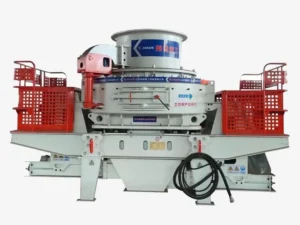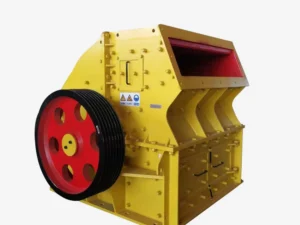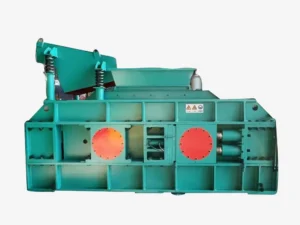Introduction:
The mechanism of sand around the world mainly adopts dry sand. There are three main sand-making processes: vertical shaft impact crusher sand-making process, hammer stone crushing sand-making process, and roller crushing sand-making process. This needs to be mentioned three major types of sand-making machines. These are the vertical shaft impact crushers, hammer sand-making machines, and hydraulic roller crushers. Here we will introduce the three types of equipment and in which case the choice is the best.
Types Of Sand Making Machines
Here are the three types of sand making machines and their respective characteristics and applications.
1. Vertical shaft impact crusher (sand making machine)

Vertical impact crusher (sand-making machine) has two types: “stone hitting stone” and “stone hitting iron.” The centrifugal crushing method crushes, shapes, and makes sand for incoming materials, thus realizing autogenous crushing and high-density autogenous crushing. This can improve the finished sand’s particle shape and aggregate efficiency.
- Vertical impact crusher has high crushing efficiency, with the function of fine crushing and coarse grinding.
- The equipment has a relatively strong capacity for crushing materials.
- The product has excellent particle shape and low flake content.
- It is suitable for aggregate shaping, mechanism sand, and high-grade highway aggregate production.
In the crushing and sand production line, the first choice is still the vertical shaft impact crusher. It can ignore the hardness of the material, not only can make sand but also has the role of shaping. Existing market requirements for sand quality are getting higher. The vertical shaft sand-making machine is still the preferred target.
2. Hammer crusher (sand making machine)

Hammer crusher mainly relies on the impact to crush materials. The material enters the crusher and is crushed by the impact of the high-speed hammerhead. The crushed materials gain kinetic energy from the hammerhead and rush toward the baffle and screen bars in the frame at high speed. At the same time, the materials hit each other and were broken multiple times. Materials more minor than the gap between the screen bars will be discharged from the gap. Larger materials are again impacted, ground, squeezed, and crushed by the hammer on the screen bars. The material is squeezed out from the gap by the hammerhead. Thus, the product with the required particle size is obtained.
- The equipment has a large crushing ratio and high yield.
- The equipment structure is relatively simple, power consumption is low, and operating costs are low.
- But relatively speaking, wear-resistant parts such as hammerheads wear out faster. It is not suitable for hard materials such as granite, pebbles, and ores.
3. Hydraulic roller crusher (sand making machine)

The roller crusher has a large crushing capacity. It is suitable for coal, metallurgy, mining, chemical industry, building materials, etc. It is also suitable for crushing raw coal (containing gangue) in large coal mines or coal preparation plants. This crusher has sensor overload protection, which is safe and reliable. It is efficient, low consumption, and evenly distributed. The particle size of the roller crusher is better than that of the hammer crusher. But it is still a little worse than the vertical shaft sand-making machine.
- The equipment has small size and large crushing ratio.
- The equipment has low noise.
- Hydraulic roller crusher has Simple structure and easy maintenance.
- The crushed materials have uniform particle sizes and low over-crushing rate.
- The overload protection is sensitive, safe, and reliable.
Conclusion:
In conclusion, these three sand-making machines have their advantages. It would help if you chose based on your specific needs. If you are interested, please tell us your requirements. We can tailor-make products that are more suitable for you and have a higher cost performance.
